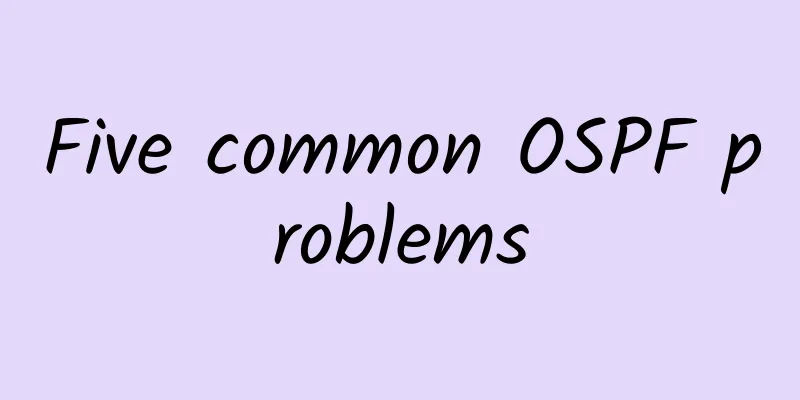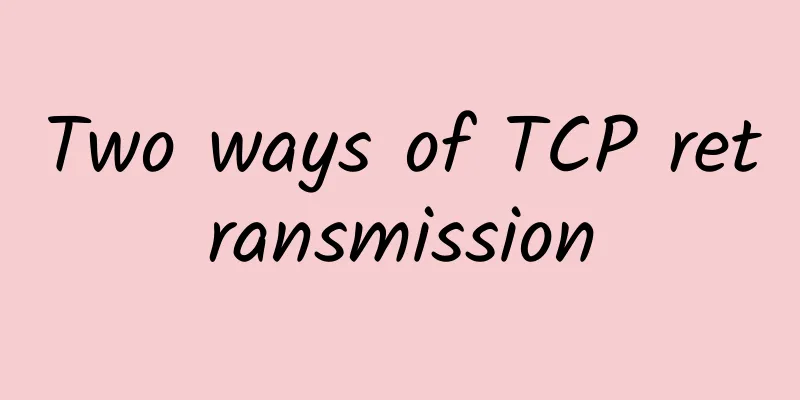Five common OSPF problems

|
I am Man Guodong, a lecturer at 51CTO Academy. On the occasion of the 51CTO Academy's "4.20 IT Recharge Festival" (April 19-20), I would like to share with you some common OSPF problems. 1. If there are two ABRs in an OSPF special area, and both ABRs issue default routes, won't this form a loop? No loop will be formed. When the ABR in a special area receives an SLA with a default route from the ABR in the same area, it will only put it into the LSDB (LSA Database) but will not use it to calculate routes, thus avoiding loops. If an OSPF router has already published an LSA containing a default route, it will not learn the same type of default route LSA published by other routers (the same type of default route LSA published by other routers will not be calculated during route calculation) If there are two ABRs in an NSSA area, will they both convert Type 7 LSAs into Type 5 LSAs? No, RFC3101 stipulates that when there are multiple ABRs in an NSSA area, only the ABR with the largest Router ID is responsible for converting Type 7 LSAs into Type 5 LSAs. 2. What is the difference between Virtual-link and Sham-link? Virtual-link is created to solve the irregular area problem of OSPF. Under normal circumstances, all non-backbone areas of OSPF should be directly connected to the backbone area (area0). If a non-backbone area must be connected to the backbone area through another non-backbone area due to early planning issues, virtual-link is used. As shown in the following figure: In order to connect Area2 to the backbone area, a virtual-link needs to be established between R3 and R2. Under the VPN configuration of OSPF, PE2 can only restore the routes learned from the remote PE1 through Mbgp to OSPF as Class 3/5/7 LSAs. If there is a backdoor link between CEs, as a backup of the public network MPLS link, the routes learned through the backdoor link on the CE are intra-regional routes. Since the routes learned from MBGP, data can only pass through the backdoor link instead of the MPLS link. To solve this problem, sham-link is generated. The main function of sham-link is to restore Class 1 and Class 2 LSAs. 3. OSPF supports multiple processes. Can an interface of a switch also belong to different OSPF processes? No. OSPF supports multiple processes, which means that multiple different OSPF processes can be run on the same switch. They do not affect each other and are independent of each other. The routing interaction between different OSPF processes is equivalent to the routing interaction between different routing protocols. However, an interface of a switch can only belong to one OSPF process. 4. OSPF GR Graceful Restart refers to a function that restarts the router gracefully, which can ensure that traffic forwarding is not interrupted and the network will not cause routing oscillation due to the short-term restart of the router. If a router does not restart the OSPF protocol in Graceful Restart mode, its adjacent routers will delete it from the neighbor list and notify other routers, causing SPF to be recalculated. If the protocol restart time is very short, it will cause route flapping. To avoid unnecessary SPF calculations, when a router restarts the OSPF protocol in Graceful Restart mode, it will notify its adjacent routers that it is only shut down for a few seconds and will soon return to normal. In this way, the adjacent routers will not delete the router performing the GR operation from the neighbor list, and other routers will not know that a router has restarted, thus avoiding route oscillation caused by changes in neighbor relationships. 5. Why does OSPF need to divide areas? In a relatively large network, OSPF LSAs are very large and take up a lot of storage space. OSPF is a link state protocol, so routers store LSAs instead of just routing information. After dividing the area, the number of LSAs that the routers in each area need to store will be greatly reduced. The link state algorithm is much more complex than the distance vector algorithm. It takes a long time to calculate the minimum spanning tree in a relatively large network, and the CPU burden is very heavy. After the area is divided, the link state algorithm is still used within the area, but the distance vector algorithm is used between areas. In a relatively large network, the network topology often changes, making the network often in "turbulence". When the network is relatively large, the probability of topology changes in the network is also relatively high. Every time the network topology changes, the minimum spanning tree must be recalculated. After dividing the area, ABR is equivalent to a "dam" to isolate the "turbulence" in different areas. 51CTO Academy 4.20 IT Charging Festival (On the 19th and 20th, 100 video courses are free to grab, and members can enjoy a 40% discount on video courses, non-members can enjoy a 30% discount, and packages can enjoy an additional 20% discount, and micro-jobs can enjoy a huge discount of 2,000 yuan) Activity link: http://edu..com/activity/lists/id-47.html?wenzhang Related video tutorials: Huawei HCNA2.1\\HCNP-RS2.0 video course http://edu..com/course/course_id-6859.html |
<<: The secret of the cybercrime chain: 1.6 million people are trading 600 million user data
>>: The secrets of the black industry: the things about the "coding platform"
Recommend
The industry chain works together to make great progress in 5G messaging
2020 is a critical year for my country's 5G c...
GreenCloudVPS: AMD Ryzen+NVMe series from $24/year, Japan Osaka large hard disk VPS from $25/year
GreenCloudVPS, which we often call GreenCloud, is...
What is the relationship between the Internet of Things and the Internet, when will the explosion occur and what are their uses?
Name Explanation The Internet of Things is an imp...
DiyVM: 50 yuan/month - 2GB/50GB/10M/Hong Kong CN2/US CN2/Osaka, Japan optional
How about DiyVM? The Chinese host provider was es...
E-Dianbao CEO Rulai Chen Tao tells you that the reason behind being No.1 is that he has been focusing on one thing for 13 years
[51CTO.com original article] The interview with C...
Recommend a lightweight and fast file transfer tool for LAN
Project Introduction Fluxy is designed to provide...
Smart building wiring, how to make a wise choice?
Smart building networks have many extremely speci...
Do you really understand the network process of IoT terminal devices connecting to the IoT platform?
Nowadays, we use a large number of IoT devices in...
Understanding the differences and application scenarios of TCP and UDP protocols in one article
[[276674]] TCP (Transmission Control Protocol) an...
HostXen offers 50 yuan for new user registration, 20 yuan for 100 yuan for recharge, starting from 70 yuan for 6G memory in the United States/Singapore/Japan/Hong Kong
HostXen has launched its regular promotional acti...
Ten reasons why it's time to retire traditional routers in branch offices
Over the years, we've dutifully upgraded our ...
The first Global Cybersecurity Industry Innovation Forum opens in Shanghai
On November 7, 2017, the first "Global Cyber...
ExtraVM 30% off, AMD Ryzen+NVMe+1Gbps unlimited traffic, multiple computer rooms in Los Angeles and other places
ExtraVM recently launched a promotion on WHT, off...
What IoT strategies do global operators have?
After several years of preparation and developmen...
RepriseHosting: Seattle servers from $27.97/month - L5640/16G memory/1TB or 240G SSD/1Gbps bandwidth
RepriseHosting is a foreign hosting company found...









